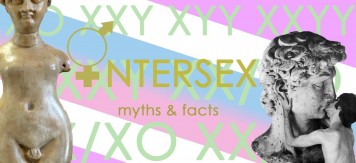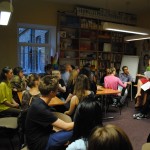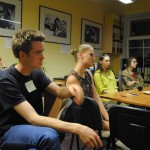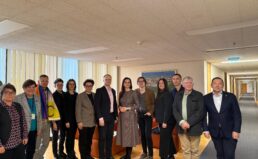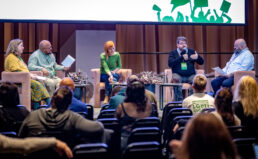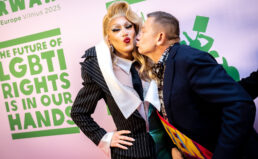“What is Intersex?” This is the question the workshop of the 17th of September began with. Through Annemarie and Elena, the LGL dealt with the most hidden letter of the LGBTI* community: the “I”.
After a quick introduction of everyone the group delved into the evening‘s topic: “Myths and Facts” about intersex people. For a question & answer game the participants were divided into three groups. In every group people had to think together about the answer to each question, matching their ideas and knowledge on the topic and trying to be the first to response, only to kick off a free debate on the topics and to find the best answer altogether. Even though the idea was perfect, the groups soon melded with the common goal of understanding the matter and of confronting their persuasions with the problems and discomforts the intersex community faces.
Already the first question – what intersex is – caused a long discussion that showed how little the knowledge about this topic is; yet understandable as intersex people add up to estimated 1.7 % of the population. Intersex individuals are those whose bodies cannot be defined as male or female because of chromosomal, gonadal or anatomical sex variations to the norms.
And why “intersex”, not “intersexual”? The term does not refer to sexual orientation or gender identity, but to physiognomy.
And it is because of those peculiar physical characteristics that the medical community has different and controversial approaches. The first problem here is the terminology which classifies intersex conditions as “Disorders of Sex Development” (DSD) – the most recent substitute of “hermaphrodite” and “intersexuality”. A more appropriate term is “Diversity of Sex Development” – this expression also meets the fact that most of the variations do not cause any health complications. As intersex conditions are most often being considered as diseases, the main response by today’s medicine is still the “sex-normalizing procedure” that aims to socially adapt the individuals through a “gender assignment surgery”. In most cases this causes severe and long term health problems: pain, lifelong ongoing operations or hormone therapy, infertility, incontinence and urethra problems are only a few. To give one example: After birth the baby’s phallus is being measured. If the size does not accord a certain length and is consequently not classifiable – a clitoris has to be smaller than 0.9 cm, a penis larger than 2.5 cm – the doctor often provides a surgery. Aside from those measures, it is simply seen as easier to construct the female genitalia, which is one reason why most intersex people are being matched to a female body.
During puberty the problems often become even more severe. Many people detect their intersex condition not until puberty because their external genitalia developed normally. Applicable for all intersex people: not only that the common sexual development and the exploration of sexuality often proceed differently, also the during puberty anyway not so stable health is especially vulnerable. As if facing social conventions was not difficult enough for everyone, the members of the intersex community often have to deal with the discordance between their gender identity (the felt one as well as the one given by society) and their documents, alongside with, for instance, the exclusion from sports because of their different hormonal levels.
Although they are facing so difficult conditions intersex people see some rays of hope: Since 1993, when the first intersex foundation – the Intersex Society of North America (ISNA) – was established, more than 20 years have passed and things are changing. Today the OII (Organization Intersex International) is the biggest representative for intersex people and has subsidiary organizations all around the world. OII was established in 2003 to give intersex people visibility and to fight for their rights.
Nowadays there are still just very few states that protect Intersexual people and grant them rights. Nevertheless, there have been some advancements. For instance, South Africa was the first country to include intersex people in equality legislations and treaties in 2005 and since then several countries followed South Africa’s example. In 2015, Malta was the first country to prohibit any unnecessary sex characteristic surgeries of a person without their consent; also the European Union Agency for Fundamental Rights is now focusing on this topic.
Cover image and text by Yuri Michieletti
Photos by Dalius Rudavičius
 LGL is carrying out the 10-month project ‘Volunteering for Visibility and Inclusion’ under the Erasmus+ programme EVS (European Voluntary Service).
LGL is carrying out the 10-month project ‘Volunteering for Visibility and Inclusion’ under the Erasmus+ programme EVS (European Voluntary Service).

